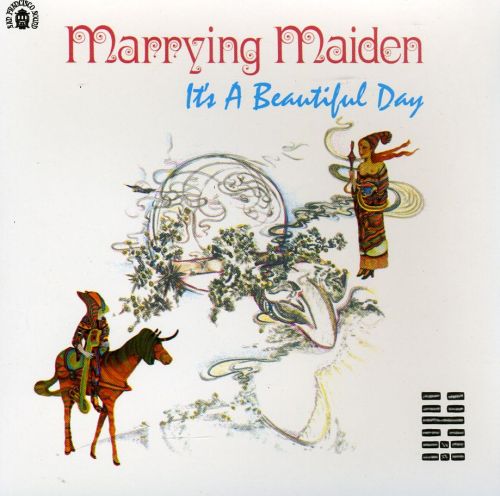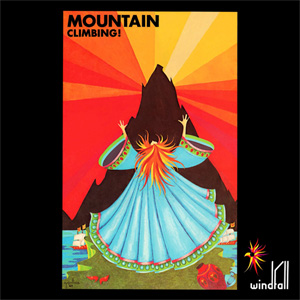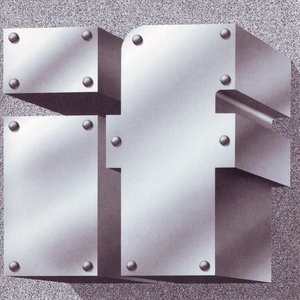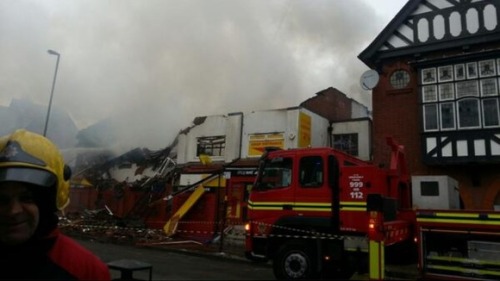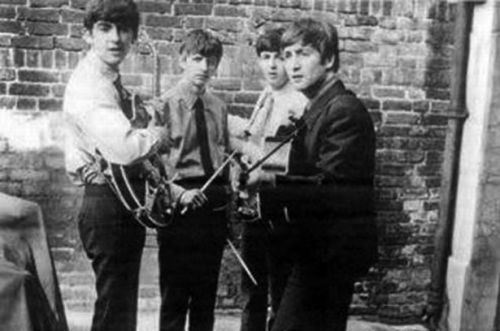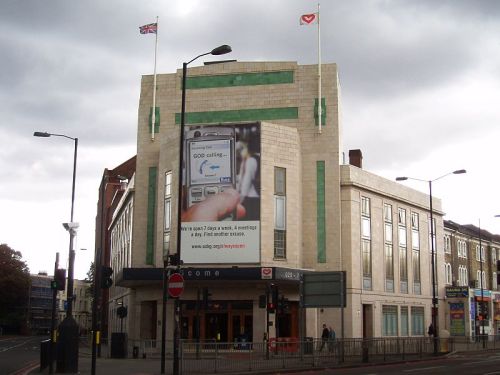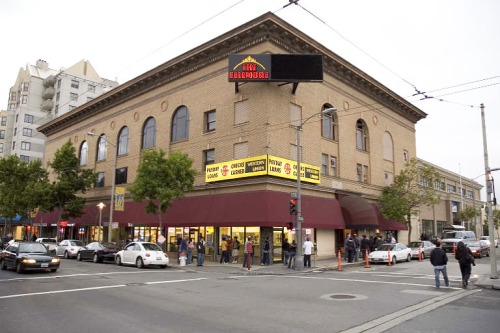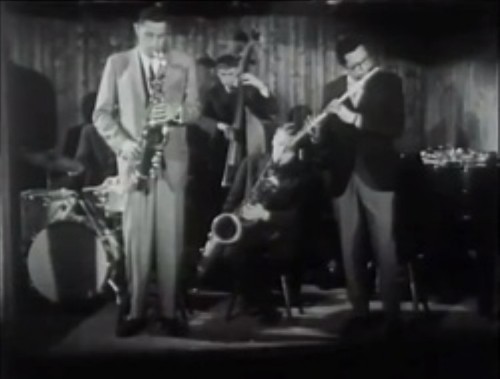Trying to get back into the normal run of life after all the emotional disruption of the last few months, so catching up with some music seemed as good a way as any of doing so. Had a pile of things stacked up and decided to start with one of the longest-running sagas in the annals of post-Beatles recorded music – the finally-released ‘Smile’, the epic Beach Boys album from 1966-1967. This has now been made available as a 5 CD Box Set, a 2 CD ‘Highlights’ package, on vinyl, double vinyl and (doubtless) every other format and permutation imaginable . Being a sucker for punishment and a long-time fan, I have inevitably opted for the Box Set 5 CD version.
Books will be – in fact they probably already have been – written about the whole ‘Smile’ saga – and herein lies the problem, because it would be impossible for this album to ever live up to the hype that surrounds it. Not that what we have here is at all unfamiliar. Many of the songs from ‘Smile’ – ‘Wind Chimes’, ‘Vegetables’, ‘Surf’s Up’ , ‘Heroes & Villains’ and others – were released in one form or another by The Beach Boys during the late 1960’s or early 1970’s and in any case, Brian Wilson has already issued his own version of ‘Smile’, released 7 years ago. And that’s to say nothing of bootlegged versions of the ‘original’ album, one of which I bought from a stall on St Albans Market at least 10 years ago.

So, it would be reasonable to ask why this after-the -Lord -Mayor’s-Ball official release has created even a moderate stir, and to explain that requires a look at the whole Beach Boys story – especially the crucial period from 1965-1971.
The thing about The Beach Boys is that they were both naff and cool at the same time. In the early days, there was always something geeky and awkward about the band as individuals, with the sole exception of drummer Dennis Wilson, who seemed a conventionally good-looking Californian scruff. The other Wilsons, Carl and Brian, always tended towards porkiness even as young men. Al Jardine was scrawny and Mike Love was rapidly losing his hair, something that he tried – fruitlessly – to disguise with various hats and elaborate comb-overs. On stage, they affected camp candy-stripe shirts and white trousers and seemed to borrow heavily from the rock and roll traditions of the 50’s. Judged on image alone, they weren’t in the same ballpark as The Beatles or The Stones and over and above all that, multiple songs about fast cars and surfing were never likely to resonate overmuch with a young teenager growing up in the East Midlands.
This being the case, everything hinged on the quality of the band’s music and that was always special. Even the early rock & roll inspired romps like ‘I Get Around’ were a cut above the norm because of their superbly arranged vocal harmonies. These suggested a level of musical sophistication that was well in excess of the requirements of the material the band were churning out. Subsequently, once Brian Wilson began to flex his compositional muscles with songs like ‘The Warmth of the Sun’ or ‘In my room’, what rapidly became clear was that in musical terms The Beach Boys were a substantial cut above most of their contemporaries.
Even so, whilst Wilson’s compositional chops were a decided asset, the band’s influences were not exactly what you might expect. If The Beatles were inspired by early Motown and the Stones by post-war Chicago blues, then The Beach Boys’ influences, Elvis and Chuck Berry aside, were straight out of white Norman Rockwell suburban Americana. On one level, whilst that meant Gershwin and Sinatra, it also meant preppy favourites like Doris Day and The Four Freshmen, all growing out of the gauche, crewcut, bobby-sox awkwardness of post-war white American teen culture. Years later, the band would release Bruce Johnston’s open love letter to this whole era – ‘Disney Girls (1957)’ on 1971’s ‘Surf’s Up’. They did so without any apparent sense of irony or regard for the prevalent counter-cultural zeitgeist.
“She’s really swell
Cause she likes
Church, bingo chances and old-time dances”
Well, gee whizz, fellas……it’s a long way from there to Woodstock nation, but the same album also featured eco-anthems like ‘Don’t go near the water’ and openly experimental songs like ‘Feel flows’…..would the real Beach Boys please stand up? By this point, it seemed that not even the band knew who they were or what they wanted to be. However, I’m getting ahead of myself here….
As mentioned, what set The Beach Boys apart from Jan & Dean and the other surf groups of the mid-60’s was Brian Wilson. It was Brian who, as a child, had led the way in teaching his brothers to sing harmonies. It was Brian who, throughout his stellar career as a high school quarterback had continued with his musical studies, it was Brian who drove The Beach Boys on to greater and more ambitious projects despite growing unease among other band members – particularly Mike Love. Finally, it was Brian who led the band out of their collective comfort zone and into uncharted waters like ‘Pet Sounds’ and ‘Smile’.

The Beach Boys in one of their stage outfits; probably around 1964
Brian stopped performing regularly on stage with the band in 1965, with first Glen Campbell and then Bruce Johnston taking his place. Fear of flying seemed to be the immediate cause of this, but whereas The Byrds used a similar problem as a lever to force Gene Clark out of the band at around the same time, The Beach Boys were savvy enough to realise Brian’s value to the band. He had swiftly moved on from niche songs about surfing and hot rods to a growing collection of more personal songs that revealed his vulnerability and sensitivity and it was these songs – ‘In my room’, ‘The Warmth of the Sun’, ‘Help me Rhonda’ and the like – that were turning heads around the world.
So Brian stayed home with his piano and his thoughts whilst the rest of the guys headed off round the world to fly the Beach Boys flag. In many ways, the removal of the pressure of live performance released the brakes on Brian’s talents and the work he did at this time took the band’s music to a whole new level of sophistication. They had by this stage already recorded basic tracks for an intended new single, a version of an old folk tune called ‘Sloop John B’. Careful listening reveals a broadening of the band’s instrumental textures – now it wasn’t all Phil Spector-ish organ and guitar; there were glockenspiels and piccolos and other less discernible sounds lurking in the mix and the overall quality of the production had been cranked up a notch or two.
It was always said of Duke Ellington that although he played very good piano, his real instrument was his Orchestra and with Brian Wilson, it would probably be fair to say that although he played piano and sang well, his real instrument was the recording studio. Brian wasn’t a great instrumentalist per se, but he had a great ear for innovative arrangements and a vivid imagination. With the band away touring, Brian began a collaboration with lyricist Tony Asher early in 1966 and around the same time also went into the studios with ‘The Wrecking Crew’, an assemblage of L.A.’s finest session players, to lay down the backing tracks for ‘Pet Sounds’.
A previous Beach Boys box set ( Good Vibrations – Thirty Years of The Beach Boys) included a ‘bonus disc’ of some of the sessions (and the between-takes studio chat) that created ‘Pet Sounds’ and they offer a fascinating glimpse of a confident Brian deploying an astonishing range of musical instruments including oddities like bass harmonica, ocarina, contra-bassoon and harpsichord. The impression you are left with is that the use of such a wide palette of instrumental colouration was no accident, nor was it a wilful embrace of novelty for the sake of novelty. Yes, Brian Wilson comes across as a kid let loose in a toyshop, but this kid seemed to know exactly what he wanted and exactly what he was doing. Even if he didn’t, the results – when ‘Pet Sounds’ finally came out later in 1966 – justified all the complexities of instrumentation and arrangement.
The full story of ‘Pet Sounds’ could detain me here for hours, but it’s ‘Smile’ that I’ve been listening to, so I’d better restrict myself to observing that ‘Pet Sounds’ marked a sea change in Brian Wilson’s development as a composer/arranger and also in his relationship with the rest of the band.
They returned from an Asian tour to be presented with a ‘fait accompli’ of six backing tracks for the new album with Tony Asher’s lyrics ready to be sung and only the vocal harmonies to be worked out. This did not go down well with some of the other members, notably Mike Love, whose musical conservatism led him to question why the band should abandon the successful formula of surfing & car songs that had propelled them to worldwide success. From ‘Pet Sounds’ onwards, Brian was effectively ‘on probation’ as far as Love was concerned and though the band would continue to follow their Pied Piper, they would do so only as long as the hit singles continued to flow. From hereon, Brian was part of the band but was also apart from the band, his growing use of drugs was starting to have an impact and the mental unravelling that would blight his career was only just around the corner.
In some respects, by 1966, Brian Wilson was no longer looking to his fellow Beach Boys for inspiration – they probably didn’t understand what he was trying to achieve and in some cases (Love) were openly hostile to it. His peers were now the likes of The Beatles and if ‘Pet Sounds’ was directly fuelled by Brian’s response to ‘Rubber Soul’, then ‘Smile’ was probably Brian’s attempt to match ‘Revolver’. Subsequently, the fact that ‘Smile’ was shelved was partly because of Brian’s sense of insecurity about his own work when confronted with ‘Revolver‘ and ‘Sgt Pepper‘ . One of the problems here was that unlike Lennon and McCartney, Brian had no-one to compete with or to bounce his ideas off. The ‘guys in the band’ had just become his ‘voices’ as The Wrecking Crew had become his orchestra. As late as 1968, The Beatles would still audition one another’s songs by getting together with acoustic guitars and sitting round playing their new songs for the rest of the band. For Brian Wilson, it was a much more solitary path and he was way ahead of virtually everyone else in his field. The Beatles had George Martin to lean on, Smokey Robinson’s arrangements were taken care of by in-house Motown arrangers but with The Beach Boys, the songs, the production and the arrangements were all down to Brian. No wonder he cracked in the end.

Brian plays his new stuff for the rest of the band….
The link between ‘Pet Sounds’ and ‘Smile’ was ‘Good Vibrations’. Originally slated for inclusion on ‘Pet Sounds’, Brian decided that he wanted to do more work on it, so it was held back…and held back….and….
Early sessions for the song date back to February of 1966, fully 8 months before it was finally released. It has been estimated that it cost 50, 000 dollars to make – a colossal sum at the time for just one song – and involved no less than seventeen recording sessions in four separate studios during the spring and summer of 1966. Tony Asher supplied the original lyrics but these were later replaced. Mike Love gets a co-writer’s credit but given his generally negative attitude to ‘Brian’s New Direction’, it beggars belief that he could have authored some of the song’s wilder flights of lyrical fancy. At one point, Love allegedly dismissed the song as ‘avant-garde shit’ and as the passing years have revealed him to be – amongst other things – a man who has an over-developed sense of his own importance, it hardly seems likely that he would pour such scorn on anything for which he might be held partially responsible.
Whatever the case, ‘Good Vibrations’ was released in October of 1966 and probably changed perceptions of The Beach Boys forever. In the UK, it was received with reverence by BBC and Pirate DJ’s alike – I can recall one informing us that this was ‘what the future will sound like.’ For all its innovative stylings, it was still recognisably a Beach Boys single and it fairly hurtled up the UK singles chart to give the band their first British # 1.
Some-time Beatles and Byrds publicist Derek Taylor described ‘Good Vibrations’ as a ‘pocket symphony’; an apt description, especially as it hints at an internal structure of different ‘movements’ with differing moods. The song was certainly a landmark on many levels – for one thing, it was probably the first truly ‘psychedelic’ hit record but more significantly in the light of what was to come, it represented a new way of making records for Brian Wilson. ‘Good Vibrations’ was recorded in sections which Brian then assembled, rather as you might put together a pre-fabricated building. This was not necessarily ground-breaking, but what changed with ‘Good Vibrations’ was that rather than being edited out to create the impression of a seamless performance, the ‘joins’ between the different sections were not only left in but were almost exaggerated. The classic example here is the section where the band softly sing “Gotta keep those lovin’ good vibrations / A happenin’ with her” and repeat it several times before plunging back into the main chorus. This section begins abruptly with only a quiet organ and softly plucked bass before the voices come in. At the end of 2011, it doesn’t sound like much, but in 1966, it was.
‘Good Vibrations’ was a huge success for the band all over the world and it gave Brian Wilson the license to pursue this approach with his next project, which was to be called ‘Smile‘. For this project, he enlisted the support of Van Dyke Parks, a Los Angeles session musician who had recorded with The Byrds and written songs for bands like Harper’s Bizarre. Parks had a reputation for witty and literate lyrics and Brian Wilson decided that he was the man to help him with ‘Smile’.

Brian Wilson in the studio with Van Dyke Parks, 1966
In the loosest terms, ‘Smile‘ is that dreaded beast, a ‘concept album’, but only in the same way that ‘Sgt Pepper’ is. Both albums are really just an umbrella for a group of songs that (in the case of ‘Sgt Pepper’) we have grown used to hearing run together in a sequence – the lack of tracking between the songs on ‘SPLHCB’ creates the illusion of a unified structure, but there is actually little connection between the suburban angst of ‘She’s leaving home’ and the ensuing acid-fuelled whimsy of ‘Lucy in the Sky with Diamonds’ . It’s the same with ‘Smile’; not much connection between ‘Heroes & Villains’ and ‘Wind Chimes’, except that they were both part of the ‘Smile’ project.
What makes ‘Smile’ interesting in 2011 is not so much the flimsiness of its over-arching concept as its massive grab-bag of influences, the continuation of Brian’s ‘cut & paste’ approach to recording, the way in which it drove a wedge between Brian and the rest of the band and his eventual decision to relinquish not only the album but his role as The Beach Boys pioneering leader. What’s interesting about the 5 CD Box is that a whole CD is given over to version after version of ‘Good Vibrations’ (or parts of it), whilst another disc is mainly taken up with multiple versions (or part-versions) of ‘Heroes & Villains’. Both of these discs are – in my view – for serious ‘anoraks’ only.
After ‘Good Vibrations’, Brian Wilson’s next big project was indeed the epic ‘Heroes & Villains’, a song that to my ears is every bit as awe-inspiring as its predecessor, but which was ultimately ditched in its original ‘expanded’ format and released as a stripped down and re-recorded single later in 1967 after ‘Smile’ had been shelved. Brian spent just as much time noodling with this one as he had with ‘Good Vibrations’ , but the ‘finished’ version available to us on ‘Smile’ has extra sections which render it disjointed amid an already slightly chaotic soundscape. More than anything else it was Brian’s failure to produce a version of ‘Heroes & Villains’ that satisfied him for a single release that led to the release of ‘Smile’ being put back and ultimately cancelled. You have to ask, what was Brian doing messing with these 2 songs for so long? Here is the point at which an experienced ‘outside’ producer could maybe have had a positive impact on a fraught situation in which arguments between Brian and the rest of the band were becoming commonplace. Whether an ‘outside voice’ could have helped or not, we’ll never know. After the re-recorded single version of ‘Heroes & Villains’ failed to match the success of ‘Good Vibrations’, Brian effectively gave up his attempts to emulate The Beatles and began his long retreat from the public eye.
So, apart from ‘Good Vibrations’ and ‘Heroes & Villains’ what is there to excite us about ‘Smile’? Sure, there are some other fine songs – especially the luminous masterpiece of ‘Surf’s Up’, but my own history forces me to see that as being part of the wonderful 1971 album of the same name, which featured a partially re-recorded version of what is one of Brian Wilson’s greatest songs. The original version of ‘Wind Chimes’ certainly knocks spots off the weird, revamped version that eventually came out on the late ’67 ‘Smiley Smile’ album. However, what has to be said about ‘Smile’ is that it signally fails to leap out of the CD drive as a full-blown classic as Brian Wilson intended. It comes across as more of a curio, a fragmented collection of toytown whimsy, half-songs and embryonic ideas that actually reflected the collective state of the whole band in 1967. Wilson would no doubt argue that he never properly completed the project and that this new release has been assembled from a series of unfinished fragments that don’t really do the material justice. Well, maybe….
Whilst those of us who were old enough were out enjoying 1967’s ‘Summer of Love’, The Beach Boys – and Brian Wilson especially – were falling apart. Brian had (consciously or inadvertently) excluded his bandmates from the creative process and was clearly happier in the studio dealing with the likes of Van Dyke Parks and The Wrecking Crew. The rest of the band, with Bruce Johnston aboard as Brian’s doppelgänger had, meanwhile, effectively become their own tribute band, long before such things were ever thought of. A stronger, braver Brian Wilson would have officially parted company with the band at this point, leaving them to their surfing and car songs, whilst pursuing his own star as a solo artist. However, Brian wasn’t strong – his mental health was already poor and for whatever reasons he was unable to sever the umbilicus connecting him to his brothers.
Drugs may have been another contributory factor in Brian over-reaching himself but the rift between himself and the other band members was at least partly down to poor judgement on his part. The hours he spent fine-tuning endless versions of ‘Good Vibrations’ and ‘Heroes & Villains’ was a strategy that was never going to play particularly well with a group who were slogging their way round the world and had fundamental concerns about where Brian’s new conceits were taking them.
The received wisdom about ‘Smile’ was that Brian wanted it released but the others wouldn’t agree – after all, he eventually recorded it and toured with his own version in 2004. Having now heard what will be seen as the ‘official version’, no matter its unfinished nature, I would have to say that I have some sympathy with their reluctance and it really doesn’t matter which of them blackballed it up until now.. As I said at the outset of this piece, no matter how good it was, ‘Smile’ was never going to live up to all the hype that has slowly built around it over the intervening 40-0dd years. More than anything else it reveals a band in the process of disintegration.
It cannot be a time that any of The Beach Boys remember with much affection; after all, the mid-60’s is littered with the carcasses of post-Beatles bands who never made the transition from pop to rock. Seen from a 1967 standpoint, The Beach Boys must have feared that they were about to be eclipsed by all these new young bands who were coming through with their long hair and outlandish names – The Grateful Dead, Buffalo Springfield, Quicksilver Messenger Service, Spirit – and that was just in California. None of them could have foreseen the way in which the band would rehabilitate themselves in the 1970’s with albums like ‘Surf’s Up’ and ‘Holland’ , let alone a series of triumphant live shows such as the one I witnessed them give at a packed and sunny Wembley Stadium in June of 1975.
Last year I wrote about the best gig I have ever attended – The Blue Nile at Birmingham Town Hall in 1990, as you asked – but The Beach Boys at Wembley is # 2 on that list and though Brian Wilson was not there, his songs were and a band I had never considered to be a top live act produced a show for the ages. Not only that but they did so amidst some pretty serious company – great sets by Stackridge, Rufus, Joe Walsh and The Eagles (aided and abetted by both Walsh and Jackson Browne) had already established a buzz among the capacity crowd. The sun beat down; it was perfect weather for a Beach Boys gig and – augmented by some seriously good session players (including Chicago’s early producer, James William Guercio) – Carl & Dennis Wilson, Mike Love and Al Jardine came out and set the place on fire. What’s more, Brian Wilson’s absence didn’t mean that Mike Love’s greasy MC routine was allowed to dictate the setlist – they played ‘Sail on Sailor’, they played ‘Surf’s Up’. they even played some avant-garde shit called ‘Good Vibrations’. Summed up, they were little short of sensational and it must have warmed the cockles of their Californian hearts to hear 100,000 sunburned kids bellowing the chorus to ‘California Girls’ into the London skies.

Carl Wilson at Wembley Stadium in 1975
As a footnote, I should probably point out that The Beach Boys were actually a last-minute replacement for Stevie Wonder, who had been taken ill. I wonder how much top-of-the-bill Elton John regretted the decision to book The Beach Boys as he had to follow them on stage. Poor dear didn’t stand a chance. In the years since, I must have spoken with 100 people who were also at that gig and I have yet to meet one that stayed to the end of Reg’s set, even though he had Steely Dan’s Jeff Baxter playing guitar for him that day.
That glorious day at Wembley is the way that I would like to remember The Beach Boys. Listening to ‘Smile’ in 2011 is, by contrast, like wandering through the rooms of a dusty old house where no-one has lived for 45 years; it’s fascinating and exhibits moments of brilliance to match anything that had come before, but whether it’s the ‘unfinished’ nature of the songs or some other factor, it just doesn’t cut it as an overall project. In the end , it remains for me just an interesting peek into Brian Wilson’s world shortly before all his dreams came crashing down, denying him his health and denying us the work of a true genius. Sure, it’s been great to see him back in recent years performing and playing the old hits, but you do wonder about what might have been….
 CSNY in 1970 – falling apart before they ever really got together
CSNY in 1970 – falling apart before they ever really got together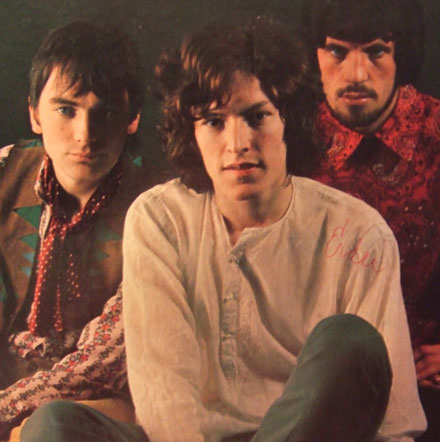 Traffic in 1970; (L-R) Wood, Winwood & Capaldi
Traffic in 1970; (L-R) Wood, Winwood & Capaldi
